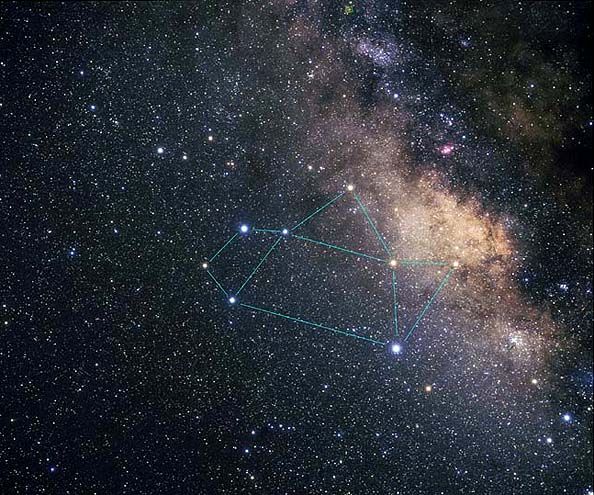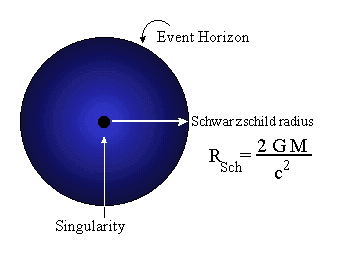|
 |
|
 |
The bulge of the Milky Way is more spherical than the disk and is composed of stars which are more reddish than those in the disk (===>they are more evolved or low mass, but are still considered Pop I stars). The bulge is roughly 30,000 to 40,000 light years in diameter.
The central region of the Galactic Bulge (the nucleus) is quite interesting because it shows activity in type similar to that shown by Active Galactic Nuclei, AGNs (although at a considerably lower level).
 |
|
The Schwarzschild radius of a black hole whose mass is the same as that of the Sun is 2.95 [M/M(Sun)] kilometers. A 4.3 million Solar mass black hole would then have a radius of 13 million kilometers, or less than a millionth of a light year. This is much smaller than the 10-15 light year sizes mentioned above for the gas ring seen around Sgr A. This evidence thus does not require the presence of a black hole at the center of our Galaxy. A more stringent and starting to become interesting constraint comes from the fact that because the density of stars near the nucleus of our Galaxy is huge, stars are expected to pass close to the very center of our Galaxy. Indeed, infrared observations have revealed the presence of several stars at the galactic center and have tracked their orbital motions over roughly the last 10-15 year period. The object S2 moves in an orbit whose size is only 950 Astronomical Units ~ 1 light-week which led to the mass estimate of 3.7 million Solar masses, and the motion of object S16 which passed within 45 Astronomical Units (a little larger than the size of Pluto's orbit about the Sun), less than 1 light-day of the center of the Galaxy. Although these are tiny, tiny orbits, they are still not small enough to resolve the black hole question. To nail the question of whether there is or is not a black hole at the center of our Galaxy requires that we peer into the nucleus of our Galaxy on scales of 3 million km or ~ 1/50-th of an Astronomical Unit (or an object whose size is much smaller than the orbit of Mercury about the Sun). This is a difficult proposition.
How often must the black hole eat in order to power the activity of the nucleus of the Milky Way?
The nucleus of our Galaxy produces energy at the the prodigious rate of 1033 Watts; the Sun only produces energy at the rate of 4 x 1026 Watts! Despite this huge power output, the black hole at the center of our Galaxy need only eat roughly 1 star every few million years to fuel its engine.